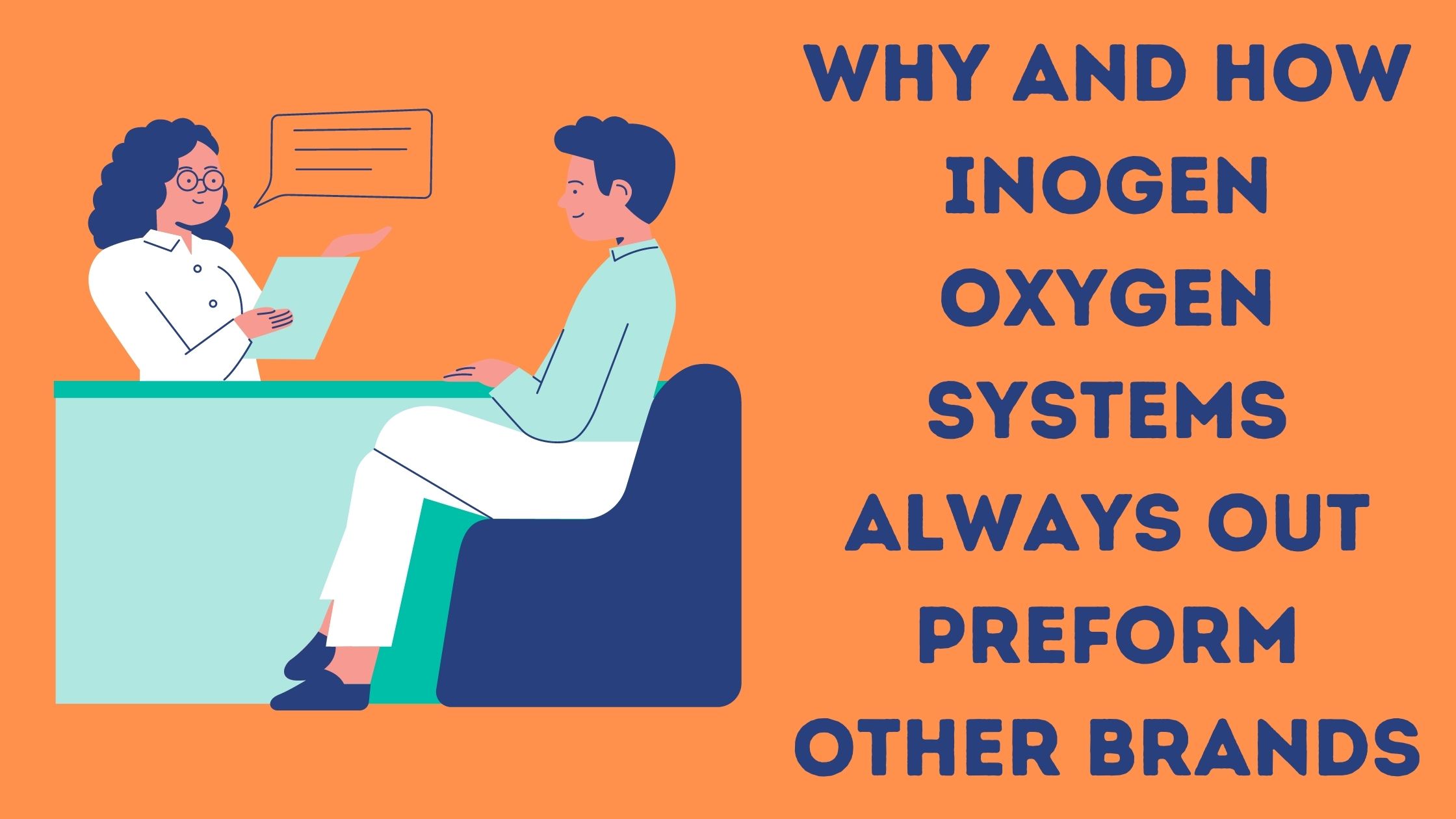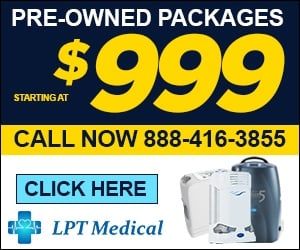
Oxygen therapy is a life saving therapy that helps oxygen patients around the world treat respiratory diseases like chronic obstructive pulmonary disease or COPD. Oxygen therapy is most commonly administered through nasal tubing called oxygen cannulas or with a face mask if you are using oxygen at night time while you sleep.
There are many ways to treat COPD, but oxygen therapy is the only treatment that has been proven to prolong life in hypoxic patients.
If you use oxygen therapy you probably have a liquid oxygen tank, a gas oxygen tank, or a portable oxygen concentrator, all of these devices will supply you with oxygen, however a portable oxygen concentrator (POC) is the easiest-to-use solution for better breathing.
In this blog you will be able to compare different solutions for your oxygen therapy needs, and specifically how Inogen oxygen devices compare to other oxygen therapy devices.
How Inogen Oxygen Devices Work

All oxygen devices push oxygen through tubing that connects to your nose so that you can breathe in the extra oxygen to treat the hypoxia caused by your disease. Portable oxygen concentrators operate very differently than an oxygen tank. Rather than getting your oxygen tank refiled every week, you simply charge the batteries.
Here is how Inogen systems work:
Purifies Air continuously

Similar to an air filter that you can leave in your home, your portable oxygen concentrator filters out impurities in the air before you breathe in the oxygen it is providing you. Inogen systems including the One G3, One G4, and One G5 all come with great filters that will extract particles from the air to ensure you are getting medical grade oxygen. Your filter should be replaced depending on how often you have to use your device, it is very easy to replace your own filter.
For example if you have the One G4, you can order a One G4 air filter, simply purchasing a new filter from LPT Medical, and calling 1(800)-946-1201.

By changing your filter when it becomes misshapen or when the screen is damaged the filters keep dust, pet hair, and other air-borne contaminants out of your oxygen.
The Inogen filters are washable and reusable so you don't have to continuously buy new ones. The best practice is to wash and dry your filters weekly, and if you use your device more often in very dusty environments, you can even clean it twice a week to help keep your concentrator working properly.
Removes Nitrogen to Deliver Oxygen-Rich Air

The air surrounding you that you breathe everyday is made up of 80% nitrogen and 20% oxygen. This level of nitrogen is not an issue for healthy people who have normal levels of oxygen in their blood. With your low levels of oxygen in your blood you will struggle with converting the nitrogen filled air into the pure oxygen your body needs.
This is why it is important for your oxygen device to take regular air and purify it to be 90-95% oxygen, with limited amounts of nitrogen.
To remove nitrogen from the oxygen you breathe you inogen oxygen concentrators goes through these three steps:
- Uses a compressor that moves air into sieve bed filters to remove the nitrogen
- Distributes the purified oxygen through hoses inserted into the nostrils
- The nitrogen is later released back into the air
Delivers Purified Oxygen Via Nasal Cannula


The nasal cannula is tubing that is attached to the oxygen device, and wraps around your head and the tubes are inserted into your nose. It is essentially a thin, plastic tube that has two small prongs at one end that rest in your nostrils.
The nasal cannula can comfortably deliver oxygen to a you at a setting of one to six liters per minute (LPM), but if you are breathing through your mouth it is possible you are not getting enough oxygen.
A study by PubMed concluded that, while mouth breathing doesn't always result in hypoxia, it can contribute to it.

If you are a mouth breather and need supplemental oxygen it could be very beneficial to learn how to breathe through your nose.
Mouth Breathing with Oxygen Therapy

To address your mouth breathing, first try to figure out the cause, and what exactly is making you breath out of your mouth rather than your nose. Once you have accurately diagnosed this, you can address the treatment options which may include the following:
Clear Your Nasal Passages
You could be breathing through your mouth because your nasal passages are blocked. A stuffy nose could be attributed to seasonal allergies, illness, prior trauma, or even weather changes.
Over-the-counter antihistamines are available to reduce your allergy and cold symptoms and for a brief time, and open up your clogged nasal passages.
Saline nasal spray is another option you have to lubricate your nasal passages and relieve congestion.

Go to the Dentist
Dentists can sometimes offer you more insight into why you are mouth breathing. It could be that a facial or dental abnormality is the cause of your mouth breathing and in this case they may fit you with a functional device to help correct the problem.
Switch from a Nasal Cannula to a Face Mask
The easiest solution to getting enough supplemental oxygen as a mouth breather, if deemed medically appropriate, is to switch to a face mask. Unfortunately, this is much more invasive for many people and must first be approved by your oxygen-prescribing healthcare provider.

Another option is to consider using the nasal cannula during the day while you are out doing things, and switching to a mouth covering face mask at night. This way you are getting the full benefit of oxygen therapy while you are asleep.
Talk to your doctor about these alternatives to the nasal cannula.
Nasal Surgery
If you have a deviated septum your nasal passages are blocked all the time and you should consider talking to an Ear, Nose, and Throat (ENT) specialist about the surgery that may help correct the problem and allow you to breathe better.
Remember anesthesia can cause postoperative complications if you have COPD, so be aware of these risks before undergoing surgery.
Pulse Oximetry for Those on Supplemental Oxygen

Despite your oxygen therapy method or device, having a pulse oximetry monitor is essential for anyone who receives oxygen therapy. Pulse oximeters can detect rapid changes in your oxygen saturation levels so that you are warned that you're low on oxygen. Knowing your oxygen saturation levels is a huge benefit and helps you treat you disease to the best of your ability
Powered by Rechargeable Battery and any AC or DC Power Source

The most notable difference between traditional oxygen tanks and Inogen brand devices is how Inogen oxygen systems are all powered by rechargeable lithium ion batteries.
Having an oxygen device that will never run low on oxygen means a number of things. First, you will never wait around for your oxygen to be delivered, nor will you have to worry about paying for your new oxygen tanks every week.

Instead, you can recharge your battery day or night, while you are using your device, in the car or on the move with an external battery charger.
You have the option to go with the smaller 8-cell battery or buy a larger 16 cell battery when you order an Inogen One G3 One G4, or One G5. The 16-cell battery lasts longer, and it is just slightly heavier.

The 8-cell battery is no additional cost and comes with the purchase of any Inogen oxygen concentrator when you purchase from LPT Medical at 1(800)-946-1201!
With a battery powered device you have the ability to take your oxygen system on a plane with you and travel to your destination stress free. You will no longer have to rent oxygen and spend valuable time and money finding a palace to rent oxygen while you are away from home.
Read our blog about traveling with your supplemental oxygen in 2021.

Out of all of the Inogen systems, our best selling device is the Inogen One G5, and here is why:
Inogen One G5

The Inogen One G5, is the most advanced Inogen system so far, it has six pulse flow settings— The amount of oxygen the One G5 can administer while maintaining the compact and lightweight design in comparison to the earlier generations is outstanding. This extra level of oxygen output gives more people who use oxygen therapy the ability to take advantage of lightweight portable oxygen devices.
If you have a lower flow of oxygen you may not see this as an immediate benefit, however having the option to increase your oxygen output is always better. As ailments worsen or your condition progresses, you may need to increase your oxygen output.
For example, if you have a chronic lung condition like COPD your prescription may be suited to a three-level flow setting, but your need for oxygenation could increase to a six while exercising, or in the case of an emergency while you are experiencing a COPD exacerbation.

One common issue you might have with oxygen concentrators in the past is their noise, which can be loud enough to impact a good night’s sleep. However, Inogen has improved upon their previous models, and the One G5 is only 38 decibels while on a level two setting, which is quieter than other Inogen One units.
38 decibels is rated as a soft sound, and typically it will not impede on your day-to-day activities, and it may just help you sleep a little better.
The One G5 unit weighs less than five pounds, which for some people may actually be too heavy to carry around all day, and that is why it comes with a One G5 custom carrying case, and you have the option to buy a One G5 backpack. The backpack can hold extra items when you are out running errands or playing a round of golf!
The One G5 also offers an amazing battery; you’ll have the option to get an 8-cell battery or a 16-cell battery. With the 16-cell battery on a setting 3 you will have power in your device for 7 hours! It is not only a great portable unit to carry around all day but it is also Federal Aviation Administration (FAA) approved meaning that it’s an excellent option if you are eager to travel.
Overview
It is clear why Inogen oxygen devices are so popular, they work well and for many different kinds of oxygen patients, but they are also durable and last a long time.
If you are interested in learning which generation of Inogen One concentrators will work better for you and within your budget, give LPT Medical a call, and our respiratory specialists will help you, and work with your doctor to find the right oxygen device for you.


.png)





